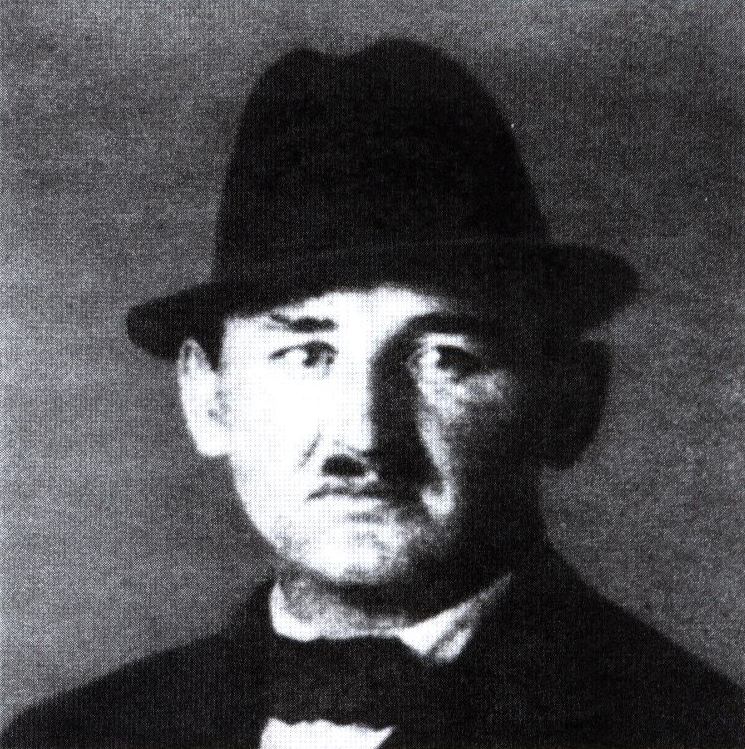
Blood Martyrs of the National Socialist Movement
The Year 1925
Gustav Kammerer
(* 2.8. 1892 - † 11. 1. 1925)
The district of Baden

The name Gustav Kammerer is only mentioned in a few sources. Even lists of an official nature do not list him.
Why this was the case cannot and should not be verified here.
Gustav Kammerer was 32 years old and a broker for agricultural products. He also ran a small farming business.
Kammerer had taken part in the battles of the First World War and was a member of the Schlageterbund, an organisation that later became the Sturmabteilung of the NSDAP.
In his hometown of Liedolsheim near Karlsruhe in Central Baden, the election campaign for the office of mayor was underway in January 1925. On this occasion, the Schlageterbund organised a parade to which Gustav Kammerer travelled. Near the SPD party office, about eighty shots were fired at the marching group. The Social Democrat Emil Schwörer had opened fire from a barricaded position and fatally shot Kammerer. Four other men of the Schlageterbund were also seriously wounded.
Department 8/274 Liedolsheim of the Reich Labour Service bore the honorary name Gustav Kammerer.
Fritz Kröber
(24 April 1908, 26 April 1925 in Durlach, Grand Duchy of Baden)
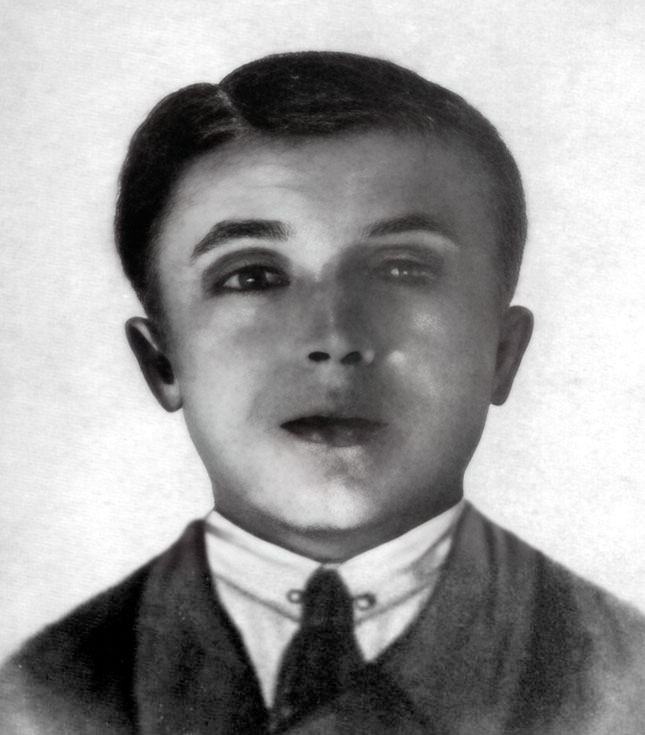
Fritz Kröber was a resistance fighter against the Weimar Republic and a Blood martyr of the National Socialist movement.
After an event on 26. 4. 1925, the Karlsruhe SA had already left, with the exception of a small guard force. Reinforcements for the men of the Schlageterbund, who had carried out a propaganda drive for the later Reich President Hindenburg, could no longer be provided.
The men now wanted to make the approximately eight-kilometre journey home, but feared attacks from political opponents. When they asked for police escort, they were told that the way back to Durlach was free and that the lorry could be driven without danger. Why this false information was given at such short notice before a serious attack could take place could never be established. The group set off.
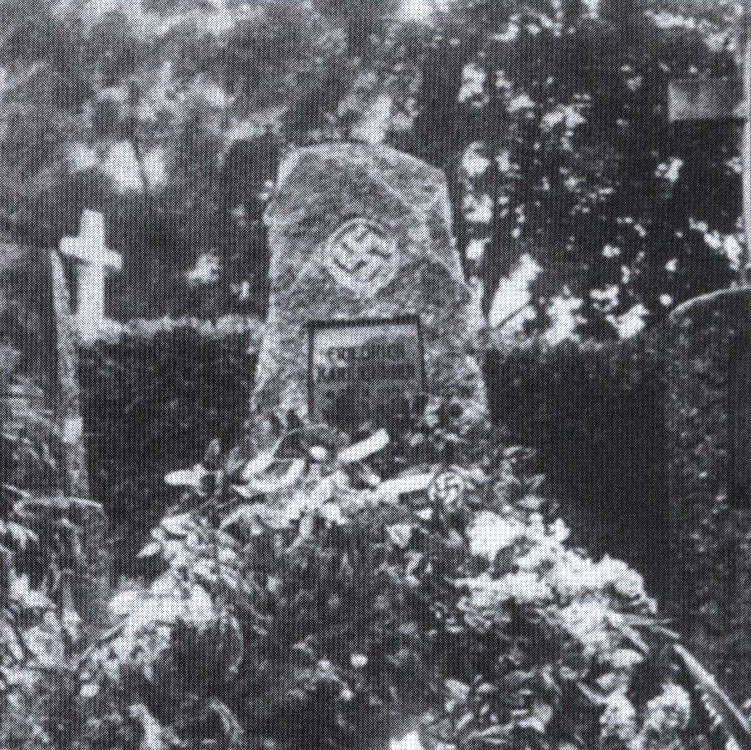
The grave of seventeen-year-old Fritz Kröber
The trucks with the uniformed men had passed the railway bridge in the direction of Durlach at dusk and were at the Durlacher Bahnhof tram stop when two hundred members of the Reichsbanner burst out of the bushes along the road and brought the vehicles to a halt by throwing stones at them. The hail of stones increased as soon as the men on the loading platforms could be seen crowded together as standing targets.
The members of the Schlageterbund hurriedly jump off the trucks and are attacked with heavy iron bars and wooden slats.
In this confusion, the police officer and Reichsbanner man Reize approaches one of the wagons. He draws his gun and fires through the planks of the loading area into the injured SA men. Fritz Kröber, lying on the ground, is hit by two shots. The seventeen-year-old dies shortly afterwards, while the Reichsbanner continues its attacks.
Kröber grew up in poor circumstances. He was a hand moulder by trade. His father was killed in the First World War and his mother worked in a slipper factory.
On 26 April 1925, the German National People's Party, the Schlageterbund and the NSDAP registered the propaganda drive on two trucks. The vehicles were provided by master bricklayer Krieger. Contrary to police regulations, the groups left the city area of Durlach to show themselves in the surrounding villages. In Wolfartsweier the vehicles met a football team from the left-wing workers' football club. There was an initial confrontation, which started from the sports club and in the course of which shots or shots were fired by one of the vehicle crews.
The journey continued via Stupferdich to Götzingen, where the men found a torn picture of Field Marshal General von Hindenburg stretched across the road. A man from the right-wing association then went to the town hall to complain. On leaving the administration building he was attacked by members of the Reichsbanner. While his comrades were trying to render assistance, another shot was fired from a blank pistol. This, it is assumed, is the origin of the rumour that circulated shortly afterwards in Durlach, three kilometres away, that a member of the Reichsbanner, which was close to the SPD, had been shot.
The cars with their crew of thirty to forty men were convinced by the police statement that they would get through safely.
When they arrived back in Durlach, the fatal attack occurred.
Otto Reize, the trade union secretary Schindler and other members of the Reichsbanner were arrested the following day. They remained in pre-trial detention in the Karlsruhe office prison until the trial began in February 1926.
Although Reize was held responsible as the main perpetrator for the death of seventeen-year-old Fritz Kröber, the sentence was only twelve months in prison with credit for pre-trial detention. The other defendants received lesser sentences. The police released Reize with the best service certificates. After serving his sentence he immediately found employment with the labour office as an unemployment inspector and from 1 October 1930 as a money collector for the local public utility company. Reize remained a member of the Reichsbanner and the SPD, for which he again appeared in public the year after the crime and even stood as a candidate in the local elections. He took his own life in 1939 after the death of his wife.
A memorial stone was erected for Fritz Kröber near the Durlacher Bahnhof tram stop.
On 14 November 1930, the Hitler Youth inaugurated the first Fritz Kröber sharp flag in the „Lamm“ campaign pub. Paul von Hindenburg won the election with 48.3% of the vote against the Centre candidate Wilhelm Marx and the communist Emst Thälmann.
The murderer was sentenced to one year in prison by the Weimar system justice.
The name „Fritz Kröber“ was added to the list of immortal followers of the Hitler Youth.
Matthias Mann
(*15 March 1898, † 28 June 1925 in Rosenheim)
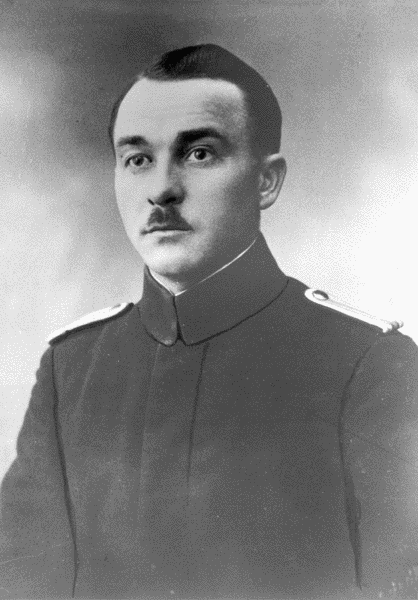
Matthias Mann was a resistance fighter against the Weimar Republic and a Blood martyr to the National Socialist movement.
Born in 1898 in Oberbalzheim near Laubheim in Württemberg, Matthias Mann had been a member of the NSDAP since 1922. After taking part in the First World War, he was a gendarmerie sergeant in Rosenheim and Lenggries, and after leaving, he was a travelling salesman for the Rosenheimer Mineralöl- und Brennstoffhandel GMBH.
After an exchange of words between National Socialists and left-wing radicals in a pub in Rosenheim (Obb.) on 27 June 1925, there is a wild brawl in the street, during which the former gendarmerie sergeant Pg. Matthias Mann bleeds to death from numerous knife wounds and blows. Three years earlier, Mann, as a constable, had had to take the red flag away from the communists, and now he became a victim of the opponents. He wore the Iron Cross I. Class in honour.
The murderers involved were all close to the KPD. On 6 October 1925 the Traunstein district court sentenced Albert Stadler, who had already been convicted, to 2 years in prison. The 10-year prison sentence demanded by the public prosecutor was not imposed because although there was much to be said for „Stadler as the main perpetrator, this could not be established with certainty“. The other perpetrators involved in the murder: Martin Gruber received 1 year and 3 months, Sebastian Gruber 3 months and Josef Staudinger 6 months in prison. These sentences, which were considered far too lenient, also provoked large protests.
Werner Doelle
(* 8 October 1909 in Berlin; † 9 August 1925 in ibidem)
Gau Berlin, SA Group Berlin-Brandenburg
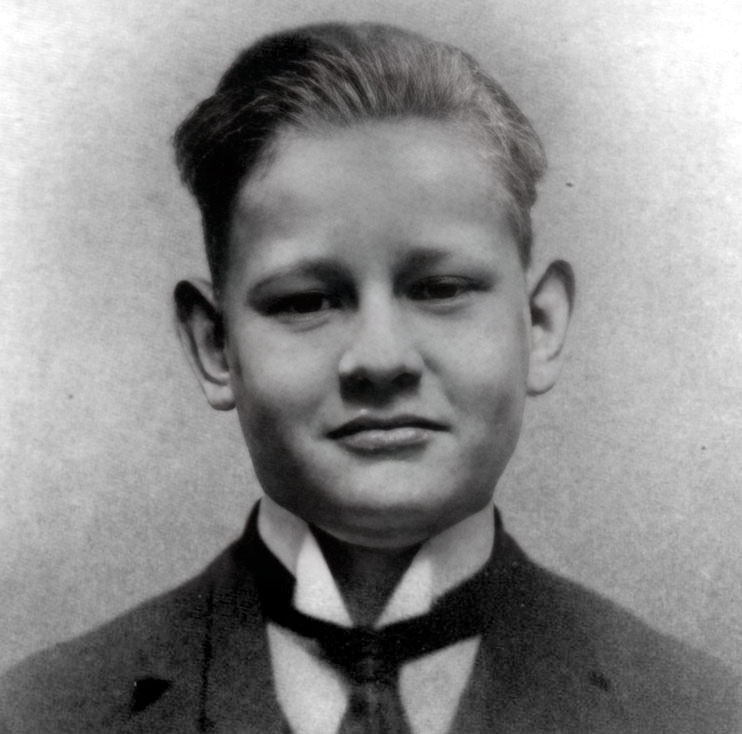
Werner Doelle was a resistance fighter against the Weimar Republic and a Blood martyr to the National Socialist movement.
Werner Doelle was born in Berlin-Steglitz. When he was three years old, his father died. From 1916 to 1918, the boy attended primary school in Steglitz. He then went to the Realschule for a short time. According to the National Socialist interpretation, Doelle had to leave school soon after because of his national attitude. The mother reported an incident from school:
In drawing class, Werner Doelle refused to draw the temporary flag of the then so-called Weimar Republic. After repeating to draw a flag, he then drew a black-white-red flag with a swastika.
After school, Werner Doelle took up an apprenticeship at Siemens. Here too, however, he clashed with the teachers at the vocational school due to political statements. Whether the young man later completed a bank apprenticeship can no longer be determined. In several sources the dead man is described as a bank apprentice. Here, too, he constantly clashed with the teachers at the vocational school because of his political statements. Doelle belonged to the national organisations Jungsturm, Bismarckjugend and Frontbann as a precursor and front organisation of the SA. He had already been attacked several times by political opponents. On the occasion of a constitutional celebration, the Reichsbanner Schwarz-Rot-Gold demonstrated on 8 August 1925. The Frontbann organisation also marched in Berlin on the same day to demonstrate its presence to the „Reichsbananen“, as the organisation, which was loyal to the Republic, was called. Their own rejection of the Weimar constitution was to be clearly demonstrated. Clashes broke out on Kurfürstendamm. The police then broke up the Frontbann's meeting a short time later. Shortly afterwards, however, the opposing groups met again in front of the „Al-hambra“ cinema. The members of the Reichsbanner were outnumbered. The leader of the left-wing unit uses the situation to make a speech against the Nationals. A brawl quickly develops in which the front banners initially have the upper hand. The leader of the republican group then jumped into a waiting vehicle, pulled out a pistol and fired indiscriminately into the crowd. Fifteen-year-old apprentice Werner Doelle was fatally shot by the Jew Schnapp in front of the house at Kurfürstendamm 68/corner of Wilmersdorfer Straße.
On the occasion of a constitutional celebration, the Reichsbanner Schwarz-Rot-Gold demonstrated on 8 August 1925. The Frontbann organisation also marched in Berlin on the same day to demonstrate its presence to the „Reichsbananen“, as the organisation, which was loyal to the republic, was called. Their own rejection of the Weimar constitution was to be clearly demonstrated. Clashes broke out on Kurfürstendamm. The police then broke up the Frontbann's meeting a short time later. Shortly afterwards, however, the opposing groups clashed again in front of the „Alhambra“ cinema. The members of the Reichsbanner were outnumbered.
The leader of the left-wing unit uses the situation to make a speech against the nationals. A brawl quickly developed in which the front banners initially had the upper hand. The leader of the republican group then jumped into a waiting vehicle, pulled out a pistol and fired indiscriminately into the crowd. Fifteen-year-old apprentice Werner Doelle was fatally shot in front of the house at Kurfürstendamm 68/corner of Wilmersdorfer Straße.
Werner Doelle was born in Berlin-Steglitz. When he was three years old, his father died. From 1916 to 1918, the boy attended primary school in Steglitz. He then went to the Realschule for a short time. According to the National Socialist interpretation, Doelle had to leave school soon after because of his national attitude. Whether this corresponds to the facts is just as difficult to verify as the question of whether the boy's murderer was actually Jewish, as described in all sources from the Third Reich.
The mother reported an incident from school.
In drawing class, Doelle refused to draw the black-red-gold flag of the Weimar Republic. The teacher then repeated his request to draw a flag. The pupil then neatly drew a black-white-red flag with a swastika.
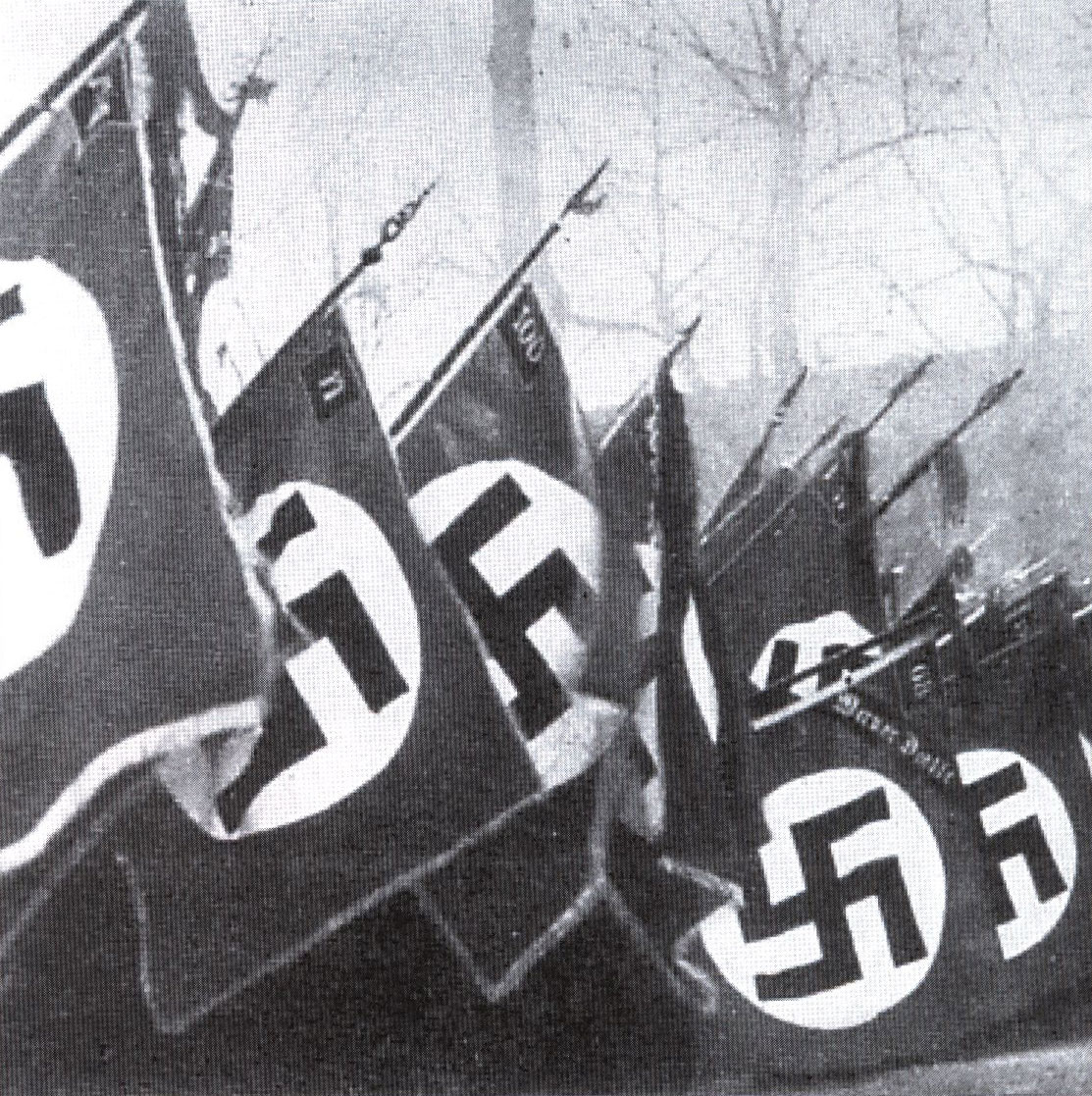
The flag of the Berlin SA Storm 68 bore the name of the young dead man.
After school, Werner Doelle took up an apprenticeship at Siemens. Here too, however, he clashed with the teachers at the vocational school due to political statements. Whether the young man later completed a bank apprenticeship is not known. In several sources the deceased is described as a bank apprentice.
Doelle belonged to the right-wing organisations Jungsturm, Bismarckjugend and Frontbann as a precursor and front organisation of the SA. He had already been attacked several times by political opponents.
On 15 August 1925, family and comrades bury the dead in Berlin.
Later, the Lichtenfelder Straße and the SA storm 68 Werner Doelle were named after him. Through reorganisation, the SA storm number 45/9 also received the name of the dead man.